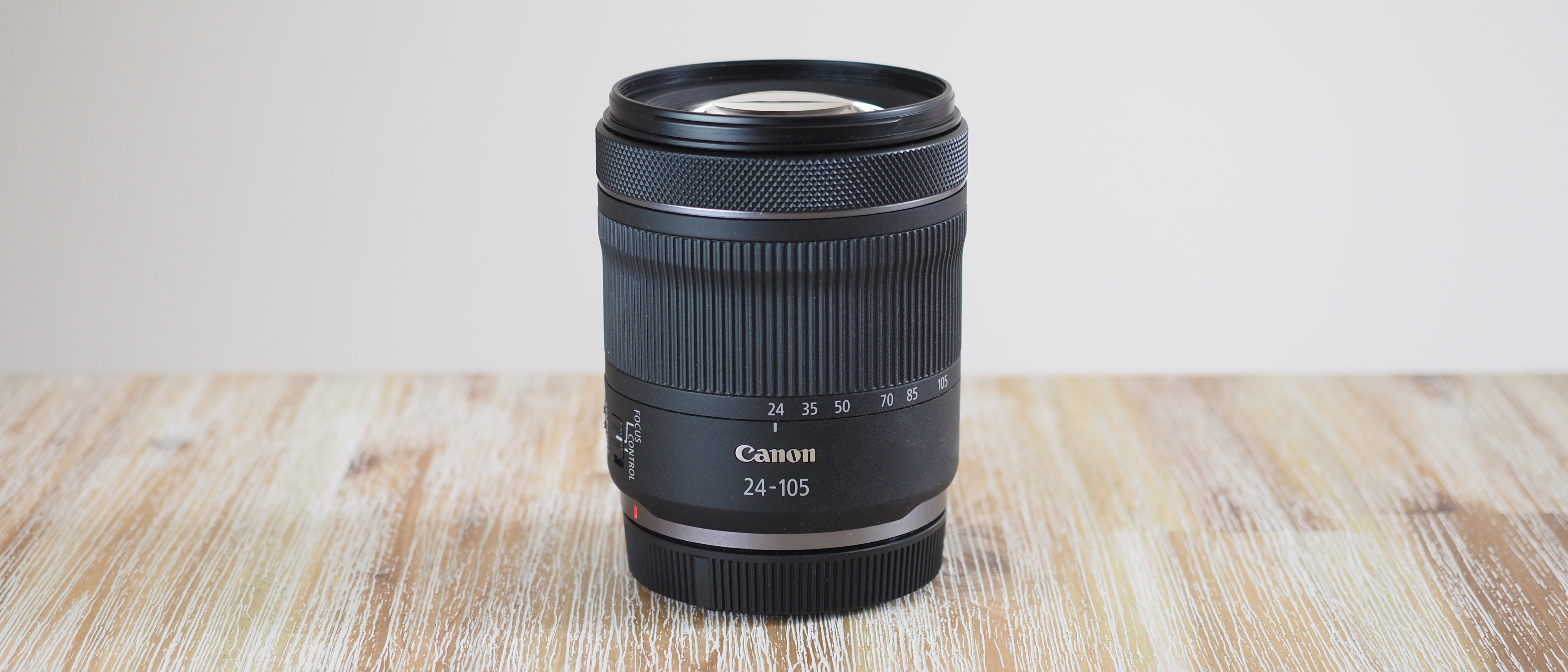Digital Camera World Verdict
The Canon RF 24-105mm f/4-7.1 IS STM is a very capable lens, a real Swiss Army knife. Its expansive focal range is extremely versatile, and it's capable at everything from portraits to close-ups – and super close-ups, too, as its Center Focus Macro mode facilitates 0.5x shooting as near as 13cm. Could it be faster? Of course it could – but for $400 / £460, f/7.1 is still workable and produces some great results.
Pros
- +
Remarkably priced
- +
Impressive sharpness
- +
0.5x macro capability
- +
5-stop optical IS
- +
Incredibly small and light
Cons
- -
Only f/4 for 24mm wide setting
- -
f/7.1 is limiting at 80mm and longer
- -
Not weather sealed
Why you can trust Digital Camera World
The Canon RF 24-105mm f/4-7.1 IS STM is a smaller, lighter and more affordable alternative to the Canon RF 24-105mm f/4 L IS USM – the "kit" lens that released with the Canon EOS R back in October 2018.
The L-series version performed far better than its kit lens designation might suggest, and it remains a formidable all-purpose optic – in fact, it sits right at the top of our best Canon RF lenses guide. So where does the new non-L version come into play, and why?
And of course, the biggest question – why the move to f/7.1, and what effect does this have on the way the lens functions?
Specifications
Mount: Canon RF
Full frame: Yes
Autofocus: Yes
Lens construction: 11 elements in 13 groups
Angle of view: 74° - 19°20', 53° - 13°, 84° - 23°20'
Diaphragm blades: 7
Minimum aperture: f/22
Minimum focusing distance: 20cm wide / 34cm tele (13cm wide in MF)
Maximum magnification ratio: 0.21 wide (MF: 0.39) / 0.40 tele (MF: 0.5)
Filter size: 67mm
Dimensions: 76.6 x 88.8mm
Weight: 395g
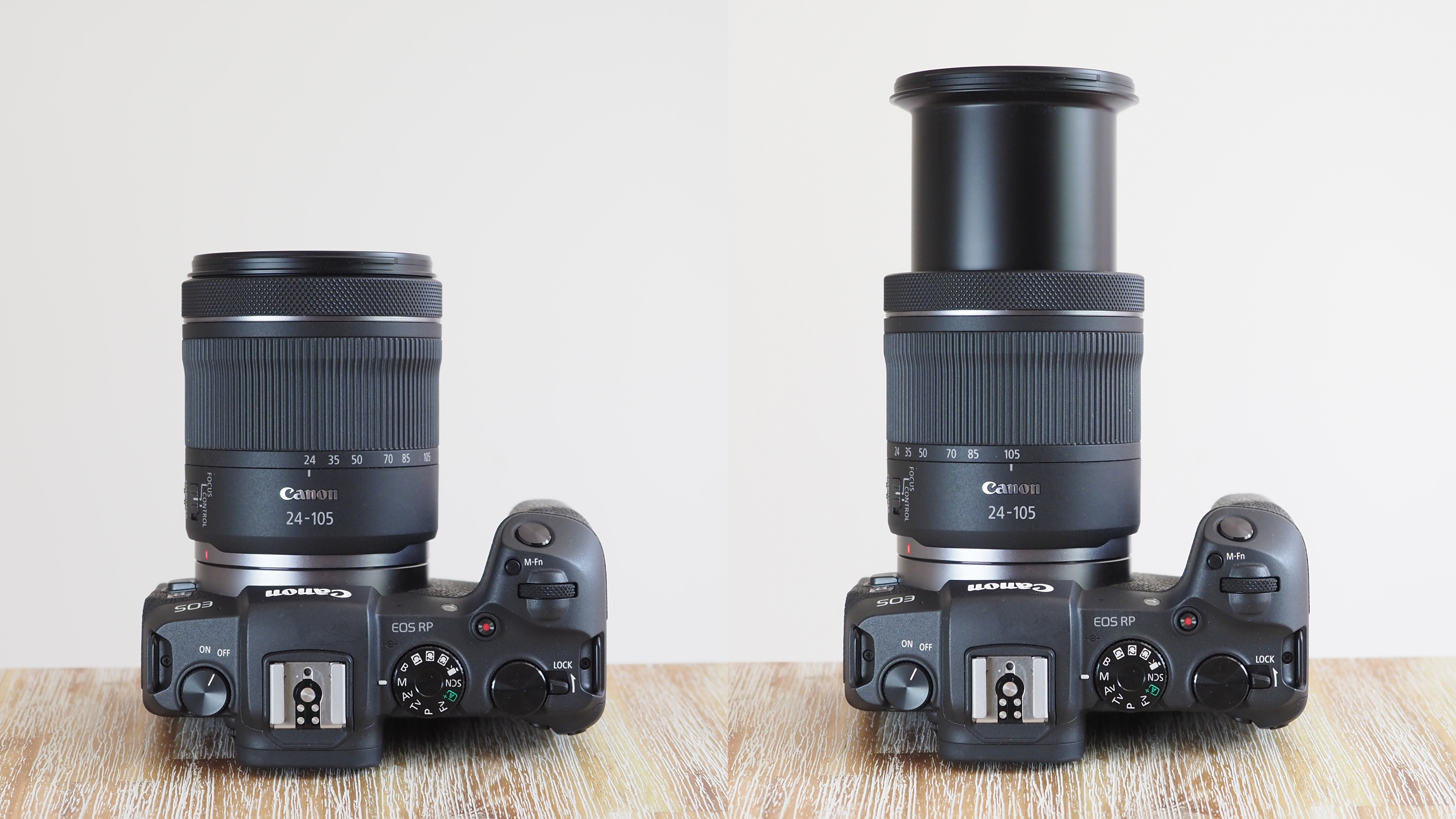
Key features
As an alternative to the existing RF 24-105mm f/4L, this lens' primary features are represented by the differences to its big brother. First and foremost is the size and weight; at just 76.6 x 88.8mm and 395g, this is positively tiny compared to the hulking 83.5 x 107.3mm and 700g form factor of the L-series version.
It also features an STM (stepper) motor, rather than the USM (ultrasonic) of the L lens. This is more a horses for courses feature, as the less expensive STM system offers near silent focus and slightly slower focusing (where the USM is faster but noisier), so if you're interested in shooting video then the f/4-7.1 has the edge.
This lens also has a closer focusing distance, able to shoot at 0.2m (or even 0.13m in manual focus) at the 24mm end and 0.34m at 105, compared to the 0.45m close focusing distance of the L lens.
Like its older sibling it features five-stop optical image stabilization, and as with all RF lenses it possesses a customizable control ring on the nose that also handles manual focus at the flick of a switch. As always, this non-L zoom has a clickless control ring (whereas L lenses have clicked rings) making it even more suitable for video work, giving you a de facto de-clicked aperture dial.
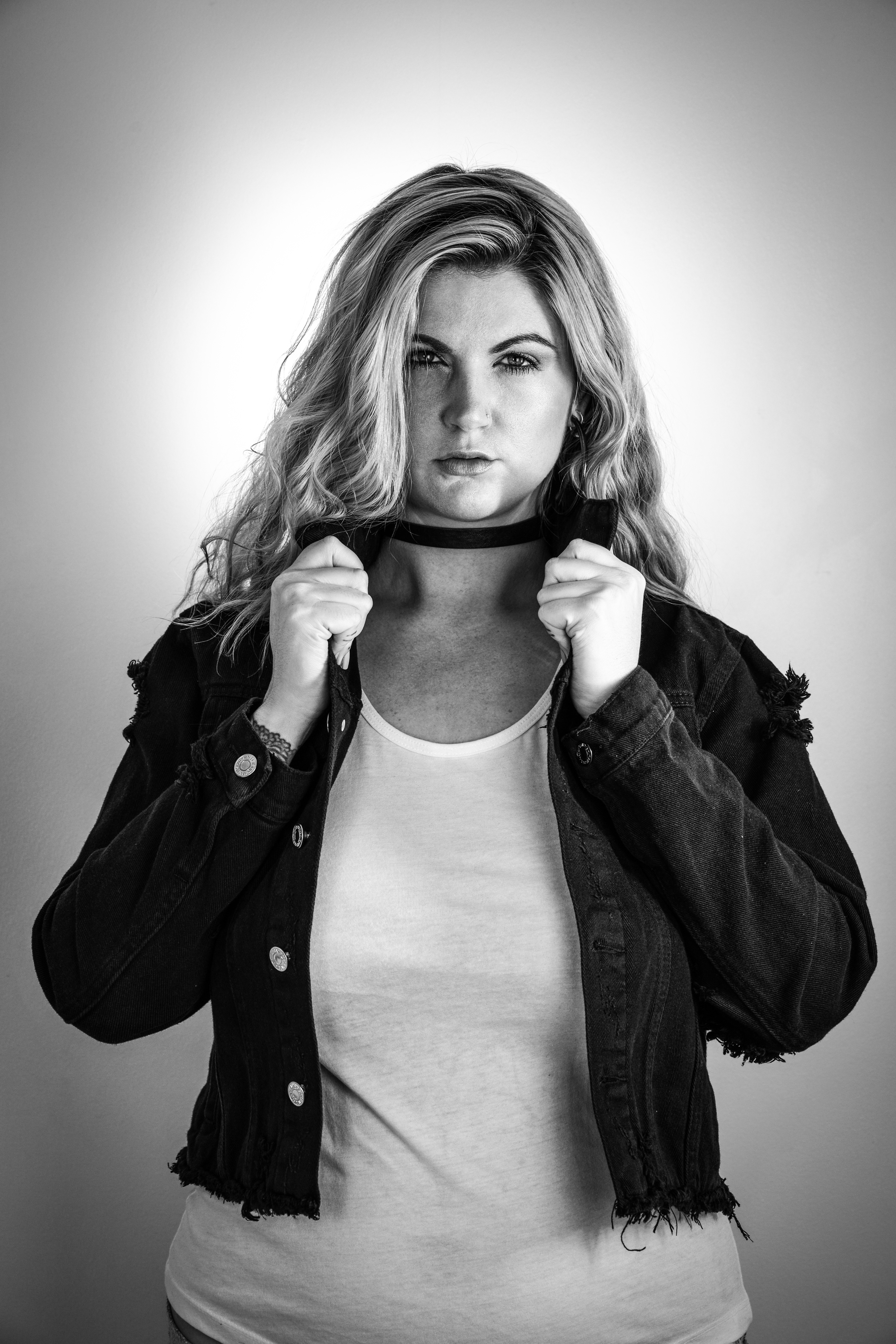
The f/7.1 aperture at portrait focal lengths limits background blur, but creates sharp portraits in a studio setting (click arrow to scroll)

The f/7.1 aperture at portrait focal lengths limits background blur, but creates sharp portraits in a studio setting (click arrow to scroll)
Build and handling
Obviously the first thing you notice about the new 24-105mm is the form factor. Compared to the f/4L it feels incredibly sleek and slender, though feels no less sturdy or substantial for its lack of heft (though, unlike its big brother, this isn't a weather-sealed optic).
Where the f/4L was clearly developed with the EOS R in mind, it did feel rather overbalanced on the smaller Canon EOS RP (particularly as the larger lens was very nose-heavy). Unsurprisingly, the f/4-7.1 seems to have been designed to pair with the RP – and it has to be said that they make an ideal pairing, forming a combo that's incredibly compact and lightweight.
The zoom ring here doesn't have quite the feathery glide as the one on the f/4L, though it achieves just the right balance between tightness and smoothness. It lacks a LOCK button to stop the mechanism telescoping open in your bag, but creep isn't an issue at all with our sample.
Whereas the f/4L featured three rings to accommodate manual focus, zoom and control, the f/4-7.1 only has two. This means that the control ring does double duty as both a customizable input (aperture, shutter, ISO, white balance or exposure compensation) and manual focus, which is toggled by flicking the FOCUS / CONTROL switch on the side of the lens. Accordingly, manual focus is fly-by-wire but still granular and accurate.

While shallow depth of field is limited by the maximum apertures, the bokeh rendition is pleasing at f/4 and f/7.1 alike.

While shallow depth of field is limited by the maximum apertures, the bokeh rendition is pleasing at f/4 and f/7.1 alike.
Performance
So what's the deal with the unique f/4-7.1 aperture on this lens? After all, most zoom lenses of this kind feature the standard f/3.5-5.6 aperture range (including the equivalent Canon EF 24-105mm f/3.5–5.6 IS STM).
Canon explained to us that, between the faster AF systems employed by the R-system bodies and their more forgiving high ISO performance, stretching the maximum aperture to f/7.1 isn't the problem that it once was. Indeed, Canon started this trend with the unusual f/4-6.3 aperture on the impressive Canon RF 24-240mm f/4-6.3 IS USM.
With all that said, what bearing does the slower f-stop actually have on your exposures – and on creative effects like depth of field? Well, here are the maximum apertures by focal length:
f/4 at 24-26mm
f/4.5 at 27-36mm
f/5 at 37-49mm
f/5.6 at 50-62mm
f/6.3 at 63-79mm
f/7.1 at 80-105mm
As you can see, that f/4 aperture is only available for a couple of millimeters. By the 50mm 'standard' focal length you've already hit f/5.6, and the speed limit of f/7.1 is in play before you hit the classic 85mm portrait length.
The net result is that, whatever you're shooting, you're going to need one of three things: abundant ambient light, abundant supplemental light, or a willingness to crank up your ISO / ramp down your shutter speed. And in practice, unless you're shooting in bright daylight or with flash, you'll need to do the latter.

The Canon RF 24-105mm f/4-7.1 IS STM has a versatile focal range and an impressive 13cm close focus, for 0.5x macro.

The Canon RF 24-105mm f/4-7.1 IS STM has a versatile focal range and an impressive 13cm close focus, for 0.5x macro.

The Canon RF 24-105mm f/4-7.1 IS STM has a versatile focal range and an impressive 13cm close focus, for 0.5x macro.

The Canon RF 24-105mm f/4-7.1 IS STM has a versatile focal range and an impressive 13cm close focus, for 0.5x macro.
As Canon noted, the higher ISO performance of the EOS R and RP mean that bumping this value doesn't have nearly the detrimental effect that it used to. We never exceeded ISO2000, though that was in a bright and airy room with the aid of continuous light (shooting a portrait at f/7.1). Still, the results were acceptable – we'd obviously rather take a zero off that ISO, but noise wasn't overly intrusive and fine detail in hairs and eyelashes was retained.
The other alternative, slowing the shutter speed, is aided by the five stops of optical image stabilization. In our experience lens IS isn't as capable as in-body IS, but the stabilization of the RF 24-105mm f/4-7.1 certainly took the sting out of shooting at 1/50 or even 1/20.
With regard to how the slower aperture affects focusing speed, all we can say is that it really wasn't an issue with this lens. Whether taking portraits or trying to focus on flowers blowing in the wind at 105mm f/7.1, the focus never dragged its heels.
Of course, where that slower aperture definitely does have a detrimental effect is when it comes to depth of field. While the bokeh itself remains very pleasant regardless of the f-stop, you're simply not going to achieve as much background blur or subject separation when shooting at these apertures. Though of course, it's worth bearing in mind that those upgrading from crop sensor systems won't feel the effect quite so profoundly (since f/7.1 is equivalent to around f/3.6 on Micro Four Thirds and f/4.7 on APS-C cameras in terms of depth of field).
Techie stuff aside, though, were we pleased with the pictures? Yes we were. Center sharpness is impressive throughout the focal and aperture range, and distortion is very well controlled from standard through to the tele end. The compromise, however, comes in corner sharpness, as well as distortion and fringing at the wider end – meaning corrections will be needed when shooting landscapes and other wide-angle scenes.

The change in perspective from the wide (where image quality is sharpest) to the telephoto end.

Lab data
We run a range of lab tests under controlled conditions, using the Imatest Master testing suite. Photos of test charts are taken across the range of apertures and zooms (where available), then analyzed for sharpness, distortion and chromatic aberrations.
We use Imatest SFR (spatial frequency response) charts and analysis software to plot lens resolution at the centre of the image frame, corners and mid-point distances, across the range of aperture settings and, with zoom lenses, at four different focal lengths. The tests also measure distortion and color fringing (chromatic aberration).
Sharpness
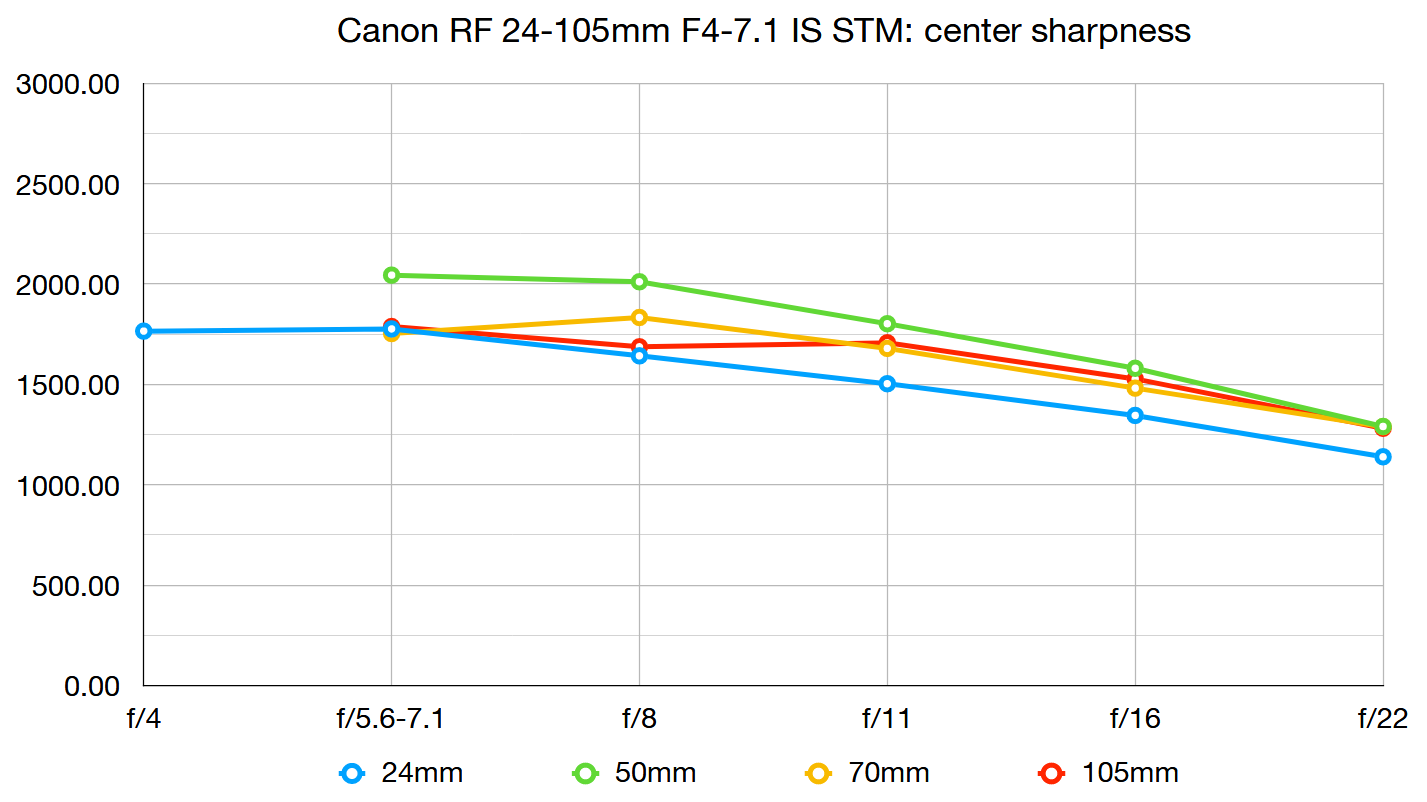
Though its lackluster variable maximum aperture is nothing special, Canon's latest RF lens certainly delivers when it comes to centre-frame sharpness, and does so at all focal lengths and typical apertures. Standout sharpness is at 50mm, where at f/5.6 and f/8 it's pretty impressive for a zoom lens.
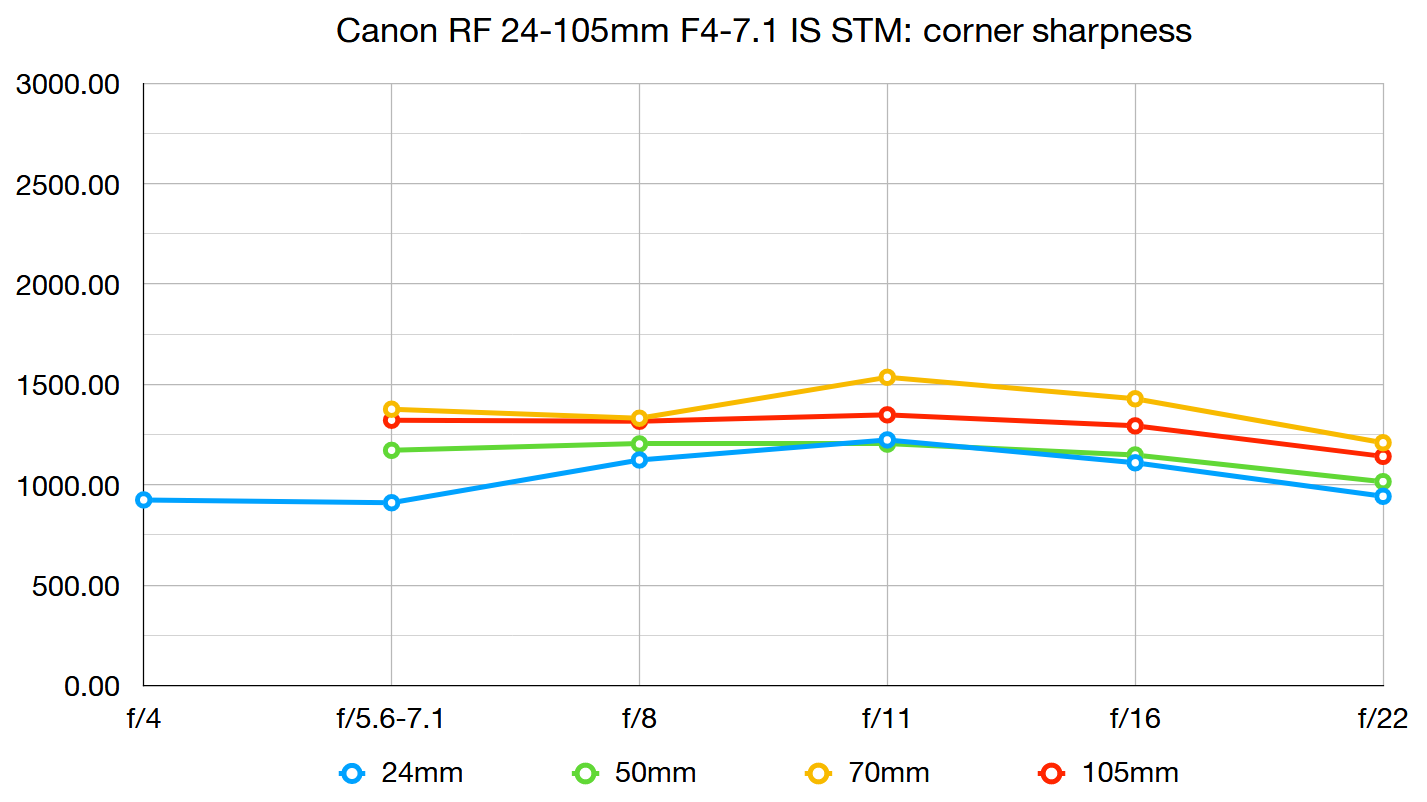
However, the lens's limitations are seen when it comes to corner sharpness. Wide open at 24mm it's verage at best, though at 50mm and above corner sharpness levels are decent enough that any slight softness in the corners of frame is unlikely to be noticeable unless you're really pixel-peeping.
Fringing
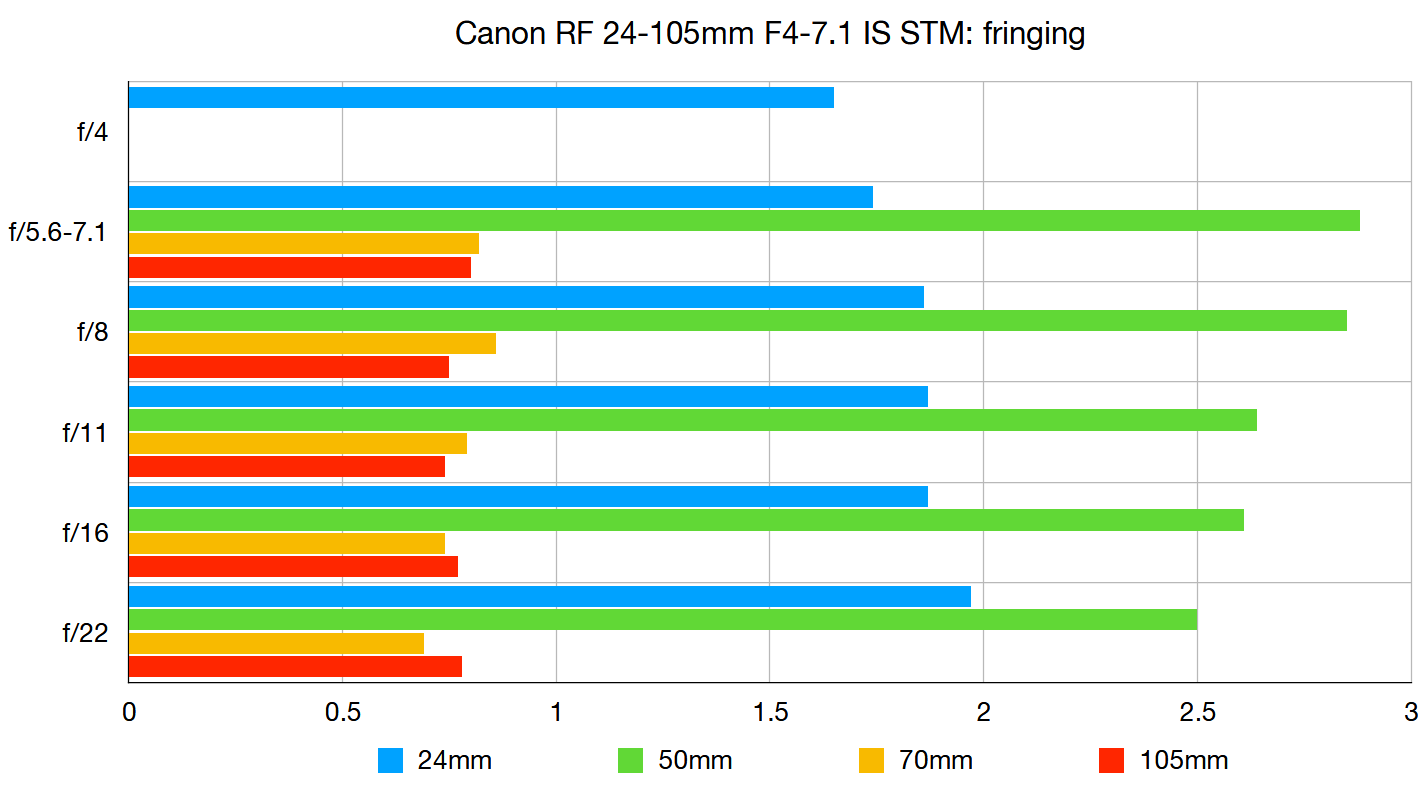
When it comes to chromatic aberration, visible as purple fringing around high-contrast boundaries in an image, the RF 24-105mm f/4-7.1 is very much a mixed bag. At 24mm and 50mm fringing is noticeable, albeit not distractingly so. But by 70mm fringing drops right down to negligible levels and stays this way at 105mm.
Distortion
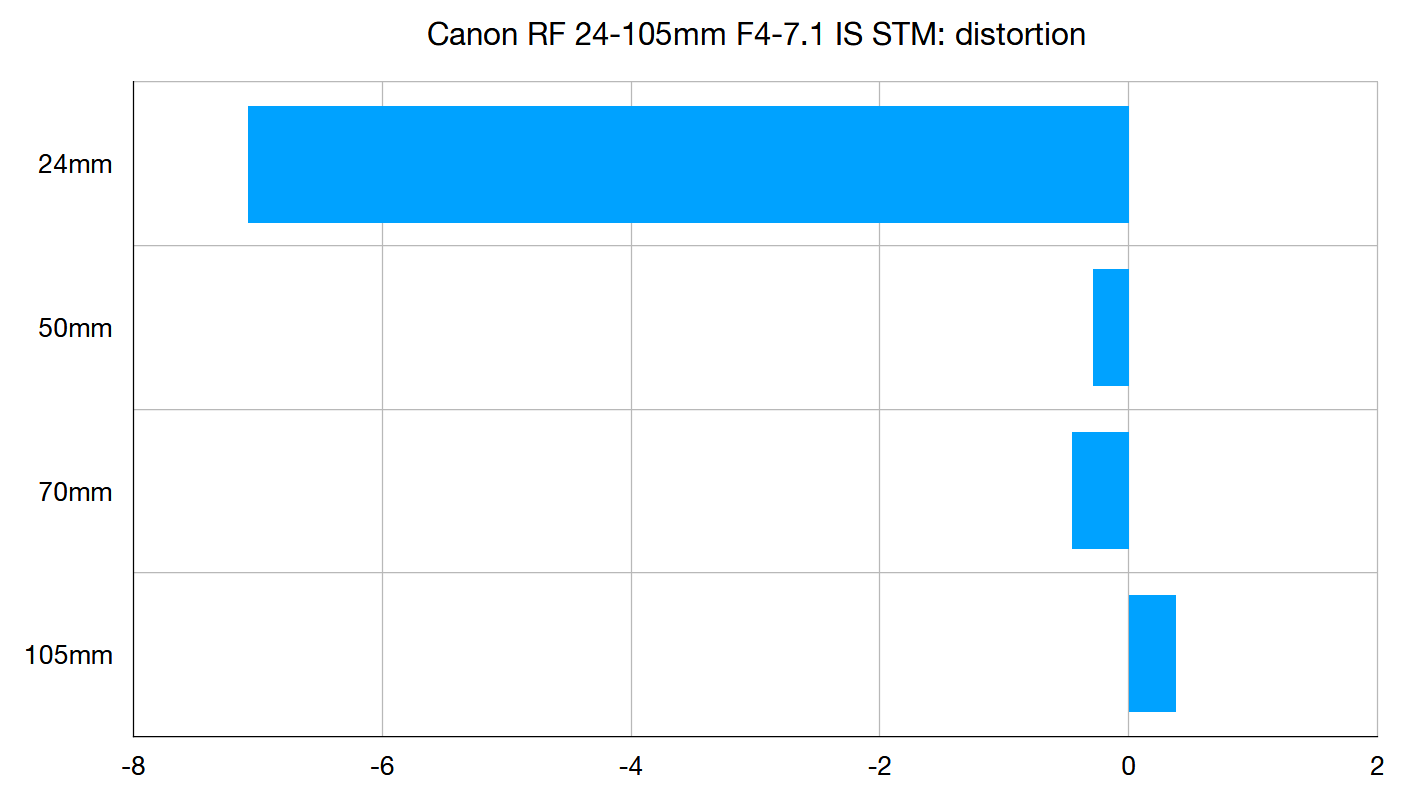
A zoom lens with a large focal range will always struggle to avoid producing distortion at all focal lengths, especially when in-camera distortion correction is disabled. This is exactly the case with this lens at 24mm, where bulging barrel distortion is very obvious. However, Canon's engineers deserve credit for how little distortion the lens produces from 50mm through to 105mm.
Verdict
The Canon RF 24-105mm f/4-7.1 IS STM is a very capable lens, a real Swiss Army knife. Its expansive focal range is extremely versatile, and it's capable at everything from portraits to close-ups – and super close-ups, too, as Its Center Focus Macro mode facilitates 0.5x shooting at 13cm when shooting at 24mm with manual focus.
Does it deliver the premium performance of the f/4L version? No, but that's a $1,099 / £1,119.99 lens. Does it have the ridiculous range of the Canon RF 24-240mm? No, but that's a $899.99 / £899.99 lens. Does it have the depth of field of the Canon RF 85mm f/1.2? No, but… you get the picture.
The Canon RF 24-105mm f/4-7.1 IS STM is a $399.99 / £459.99 optic, and for that price it delivers image quality and capabilities that are extremely hard to argue with. Yes, the f/7.1 aperture is limiting, but on the other hand it also brings most focal lengths natively closer to the f/8 sharpness sweet spot. And no, it's not going to give portrait photographers the blurry backgrounds they crave – but that's not what this lens is designed to do.
This is a lens designed to be a carry anywhere, shoot-anything tool that will cover your bases for landscapes, architecture, nature, people and even macro images. Ideal for everyday shooting, travel photography, and as a cover-your-bases lens that you can always keep in your camera bag, the RF 24-105mm f/4-7.1 is the bargain of the year for R-system users.
Read more:
Best Canon RF lenses: the best lens for Canon EOS R and EOS RP in 2020
Canon RF 24-105mm f/4 IS USM review
Canon EOS R review

James has 22 years experience as a journalist, serving as editor of Digital Camera World for 6 of them. He started working in the photography industry in 2014, product testing and shooting ad campaigns for Olympus, as well as clients like Aston Martin Racing, Elinchrom and L'Oréal. An Olympus / OM System, Canon and Hasselblad shooter, he has a wealth of knowledge on cameras of all makes – and he loves instant cameras, too.
